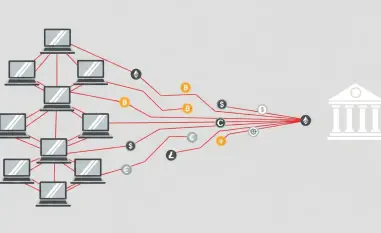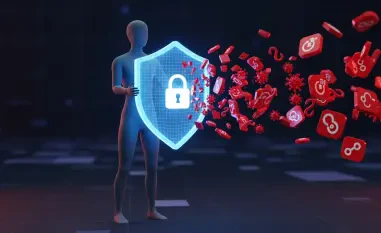In the realm of cybersecurity, Malik Haidar stands as a beacon of expertise, adept at analyzing and thwarting threats posed by advanced hackers. His unique approach seamlessly integrates business acumen into strategic defenses, making him a sought-after voice in combating malicious cyber activities. Today, we delve into a recent campaign involving Russian hackers and their use of innovative techniques to deploy new malware called LOSTKEYS.
Can you provide a brief overview of the threat actor COLDRIVER and their recent activities?
COLDRIVER, also known by other names such as Callisto and Star Blizzard, is a threat actor group heavily affiliated with Russian interests. Recently, they’ve shifted their tactics from phishing to deploying custom malware in highly targeted espionage campaigns. Their focus has been on high-value targets, including advisors to Western governments, NGOs, and media personnel, notably those connected to Ukraine.
What is the new malware called LOSTKEYS, and what are its main capabilities?
LOSTKEYS is a sophisticated piece of malware designed to stealthily extract sensitive information. It’s adept at pilfering files based on predefined extensions and directories and is capable of sending detailed system and process information back to its operators. This makes it an effective tool for consistent data gathering and surveillance.
Which groups or individuals have been targeted by the LOSTKEYS malware?
The malware has been deployed with precision against several high-profile groups, including advisors to Western governments, journalists, and think tanks. Individuals and organizations associated with Ukraine have also been prime targets, reflecting current geopolitical tensions.
How does LOSTKEYS signify a shift in COLDRIVER’s previous hacking methods?
Historically, COLDRIVER relied heavily on credential phishing, but the introduction of LOSTKEYS marks a departure to more direct and intrusive tactics. This custom malware represents a strategic pivot to exploit vulnerabilities and execute espionage at scale, while still maintaining surgical precision in target selection.
What is the social engineering technique called ClickFix, and how is it used in these attacks?
ClickFix is an innovative social engineering trick that deceives users through fake CAPTCHA verifications. In this scenario, victims are lured into running a PowerShell command, believing they are passing a security check. This manipulation is crucial for initializing the multi-stage malware infection process.
How does ClickFix contribute to the deployment of the LOSTKEYS malware?
The ClickFix method is pivotal as it bypasses conventional security barriers and compels users to activate malicious scripts unknowingly. This technique facilitates the download and execution of LOSTKEYS by disguising itself as a harmless CAPTCHA interaction.
Can you describe the multi-stage infection process utilized by COLDRIVER in their attacks?
COLDRIVER’s infection method is complex and involves several stages. It begins with the ClickFix trick, prompting users to run a PowerShell script that establishes a connection with a remote server. Subsequent payloads are then retrieved and decoded in sequence, ensuring the malware can operate effectively without immediate detection.
What role does PowerShell play in the deployment of LOSTKEYS?
PowerShell acts as the initial vector, executing commands that fetch subsequent payloads from remote servers. It’s integral to maintaining the infection process while also evading standard security measures through obfuscation and strategic payload deployment.
What precautions have been observed in the malware’s deployment to avoid detection?
COLDRIVER employs several evasion techniques, including virtual machine checks and unique encryption keys for each infection. These ensure that the malware operates below detection thresholds and adapts to different environments without triggering security alerts.
How are encryption keys and identifiers used uniquely for each infection chain in the LOSTKEYS attacks?
By assigning distinct encryption keys to each malware strand, COLDRIVER guarantees that each infection chain is isolated, complicating decryption efforts and increasing stealth across different executions. This customization enhances confidentiality and control over the malware’s operations.
What is the significance of the additional LOSTKEYS artifacts discovered, and what uncertainties remain about them?
The discovery of LOSTKEYS artifacts dating back to late 2023, disguised as binaries related to reputable platforms, hints at a broader timeline of deployment than initially thought. However, uncertainties linger regarding whether these variants were repurposed by COLDRIVER or independently circulated.
How has ClickFix been used by other threat actors, and can you give examples of different malware families it has distributed?
ClickFix, originally seen with COLDRIVER, has been co-opted by various threat actors for distributing malware like the Lampion banking trojan. Its simplicity and effectiveness have made it a popular choice for other cyber threats requiring user manipulation.
What makes the infection chain of the Lampion banking trojan particularly challenging to detect?
Lampion’s infection sequence spreads across multiple processes, avoiding a clear attack path and often mimicking non-threatening activities. This fragmentation complicates detection, making it harder for security systems to piece together an attack narrative.
Can you explain the combination of ClickFix with the EtherHiding tactic?
Combining ClickFix with EtherHiding enhances the complexity of attack vectors by utilizing blockchain contracts to obscure payload deliveries. This tactic confuses traditional security measures, leveraging decentralized systems to conceal malware transactions effectively.
How is EtherHiding used to deliver the Atomic Stealer malware to macOS users?
Through EtherHiding, threat actors employ smart contracts to trigger clipboard commands executed via macOS shortcuts. This method masks payload deployments, culminating in the installation of the Atomic Stealer malware, which compromises macOS systems seamlessly.
What are the key characteristics of the large-scale campaign codenamed MacReaper?
MacReaper represents a vast watering hole attack, infiltrating roughly 2,800 legitimate websites to serve fake CAPTCHA prompts. It utilizes extensive obfuscation, blockchain-based infrastructure, and multi-layered iframe tactics to achieve widespread malware distribution.
Can you discuss the significance of using blockchain-based command infrastructure in these attacks?
Blockchain’s decentralized nature is exploited to conceal command and control operations, reducing traceability and elevating security challenges. This infrastructure makes dismantling the attack framework much more challenging for cybersecurity defenders.
Based on this article, what can be inferred about the evolving strategies of cyber threat actors?
Cyber threat actors are increasingly sophisticated, blending social engineering with decentralized technology to elude detection and enhance operational stealth. Their evolving strategies reflect a nuanced understanding of security systems, requiring ongoing adaptation and vigilance from cybersecurity professionals.













